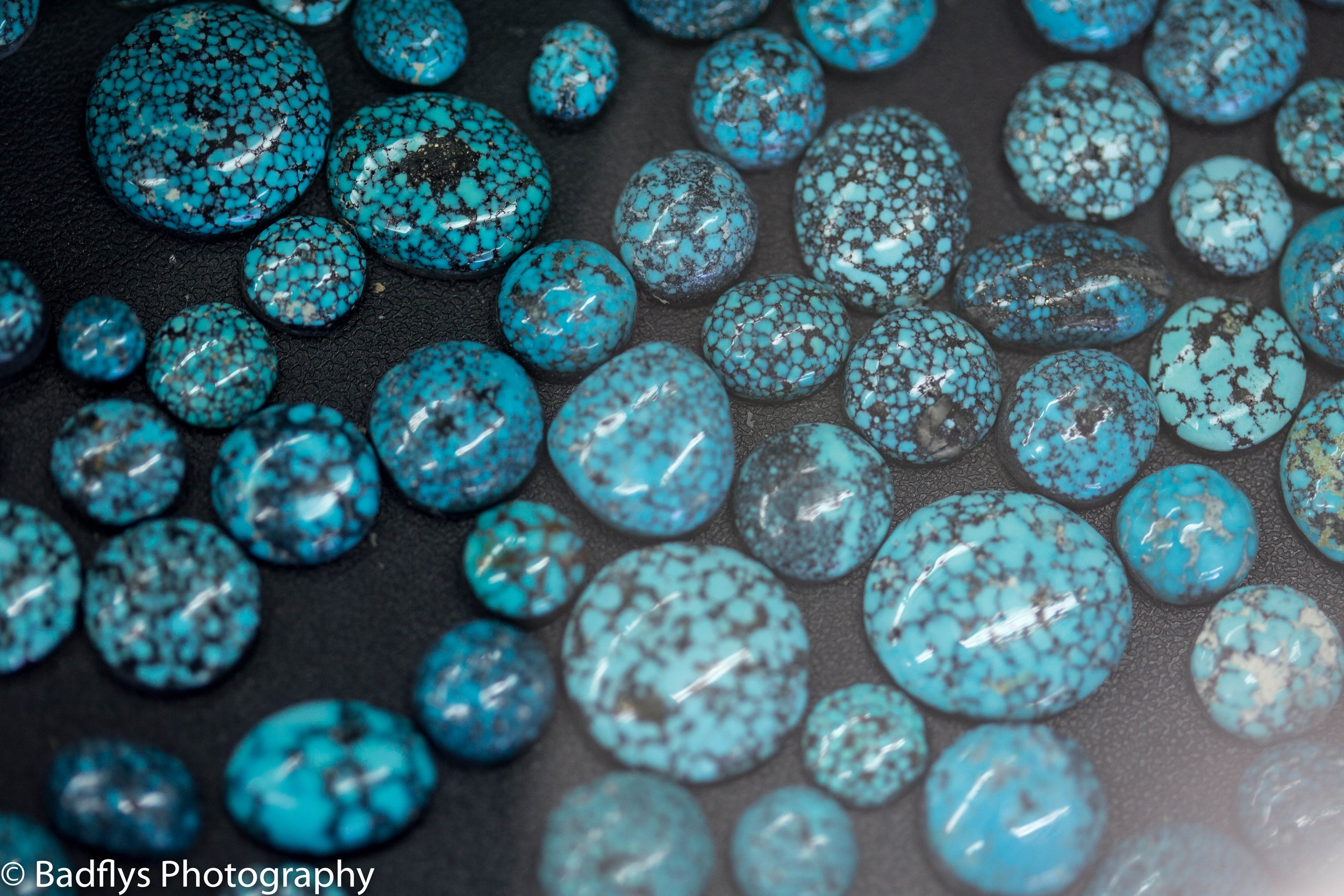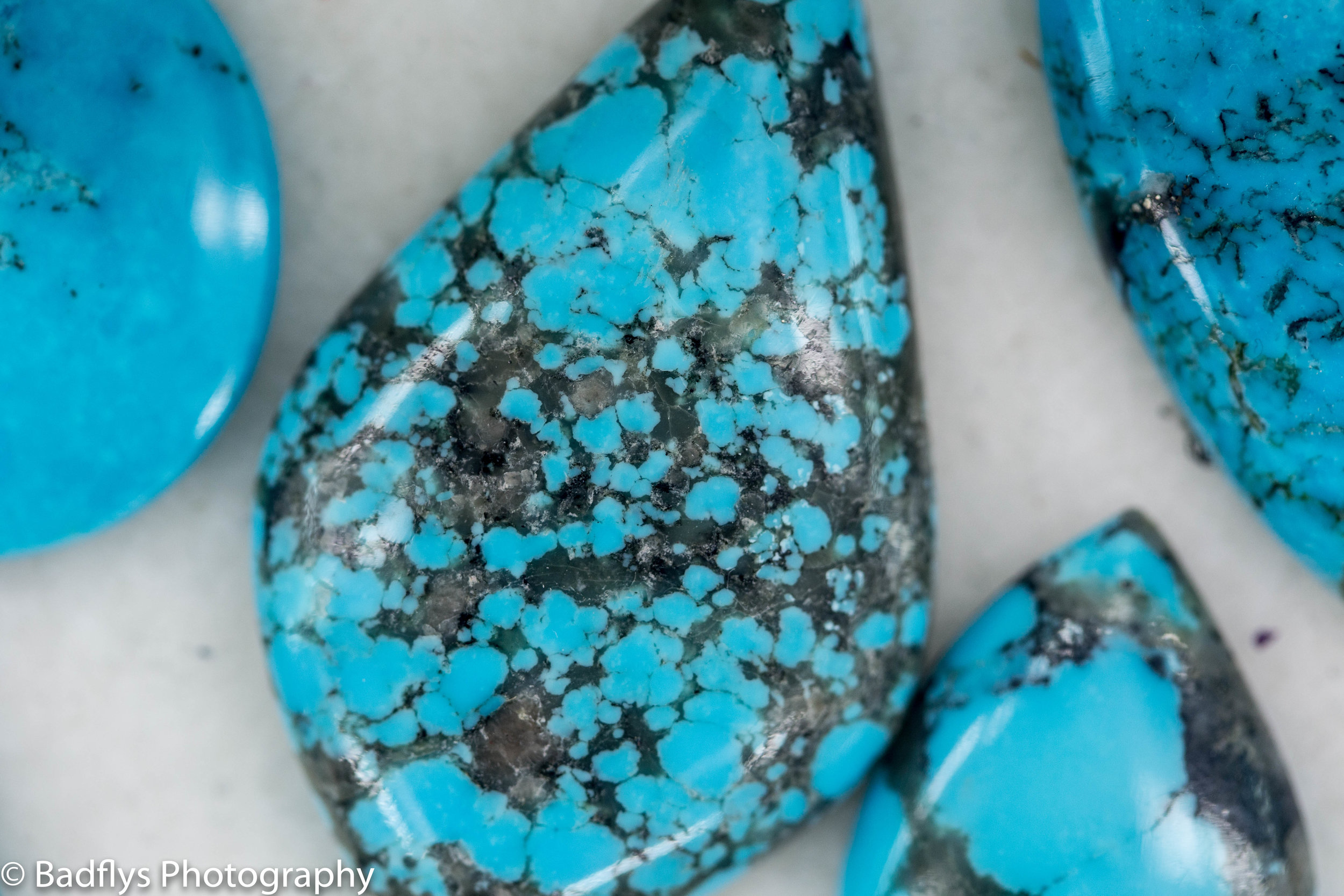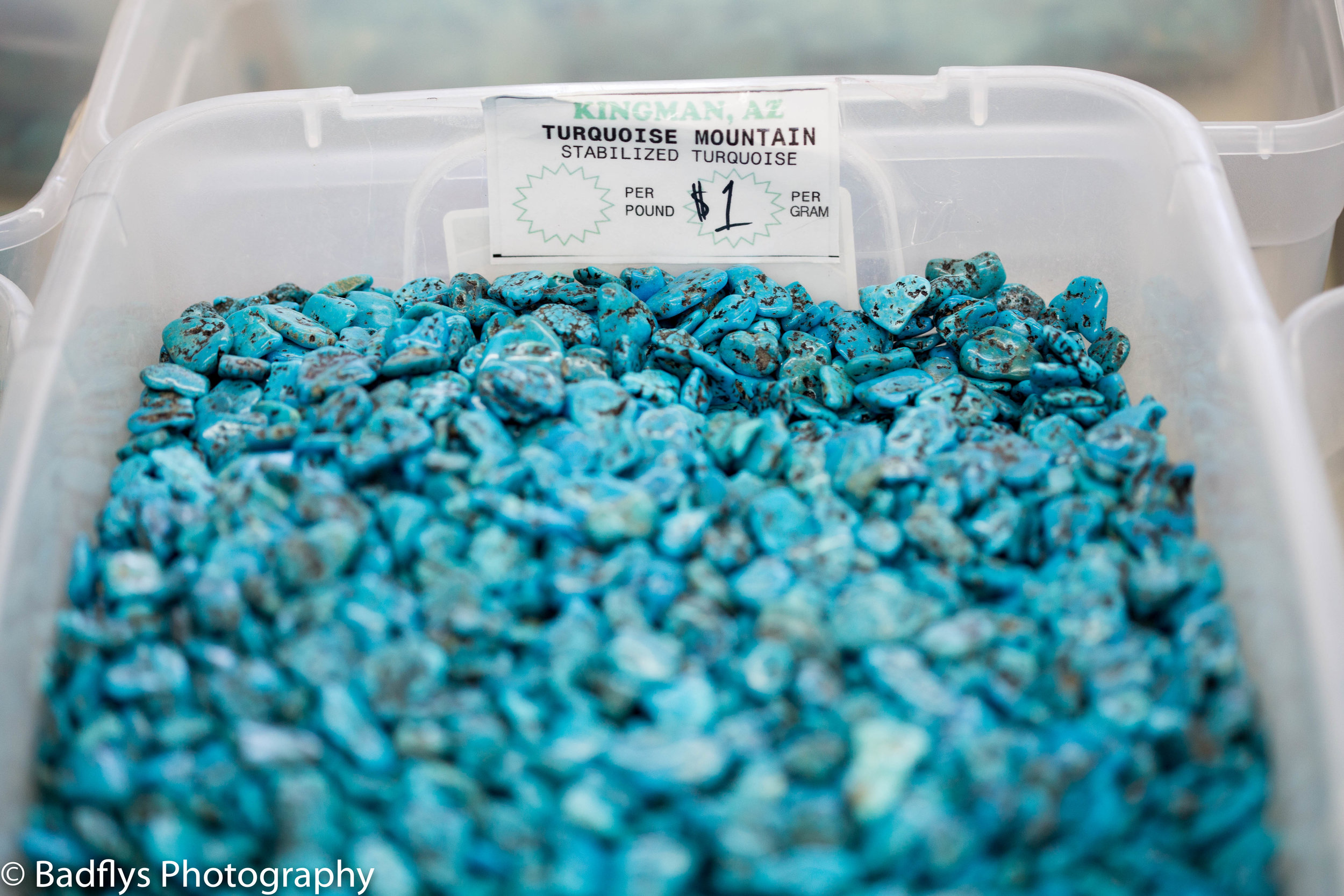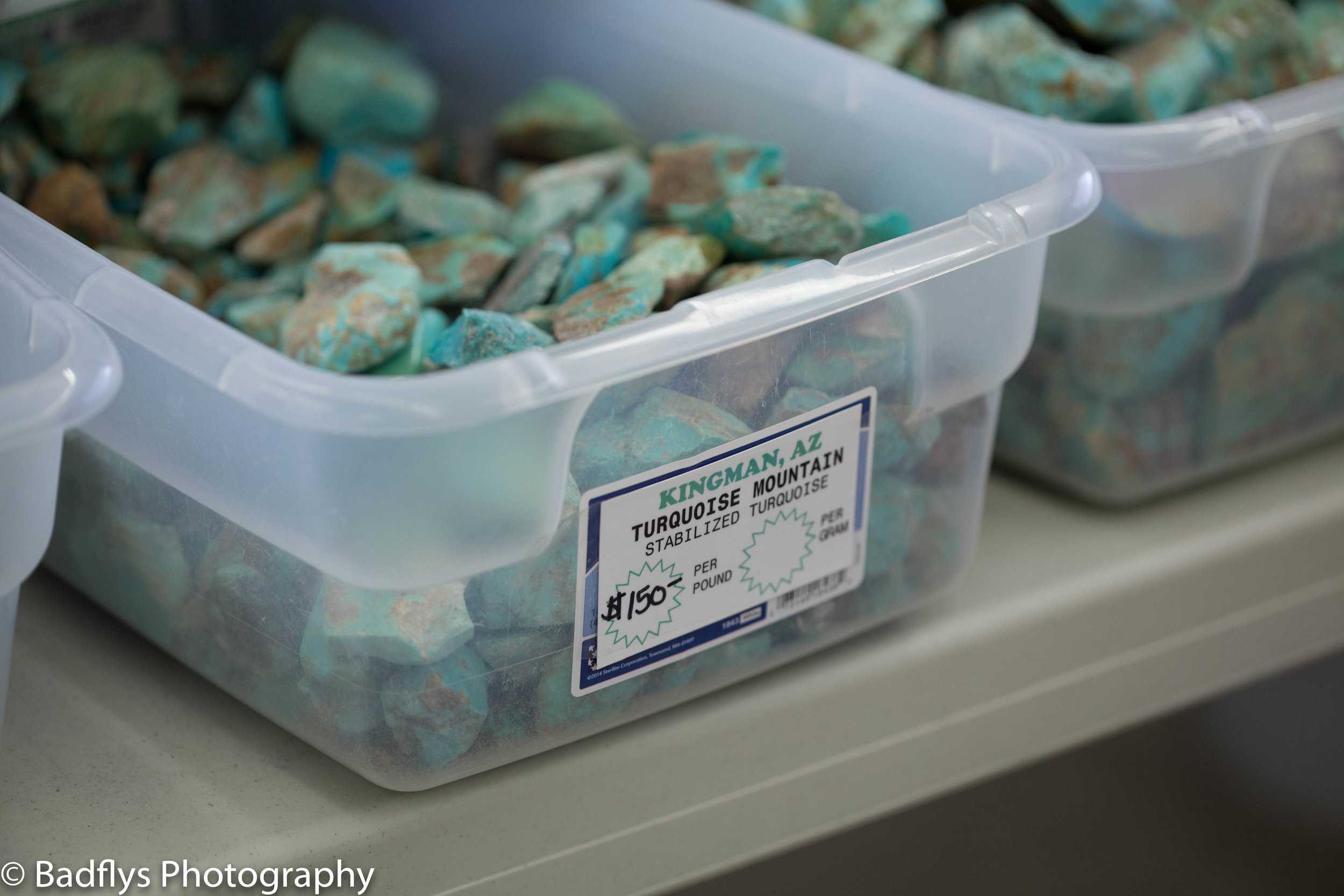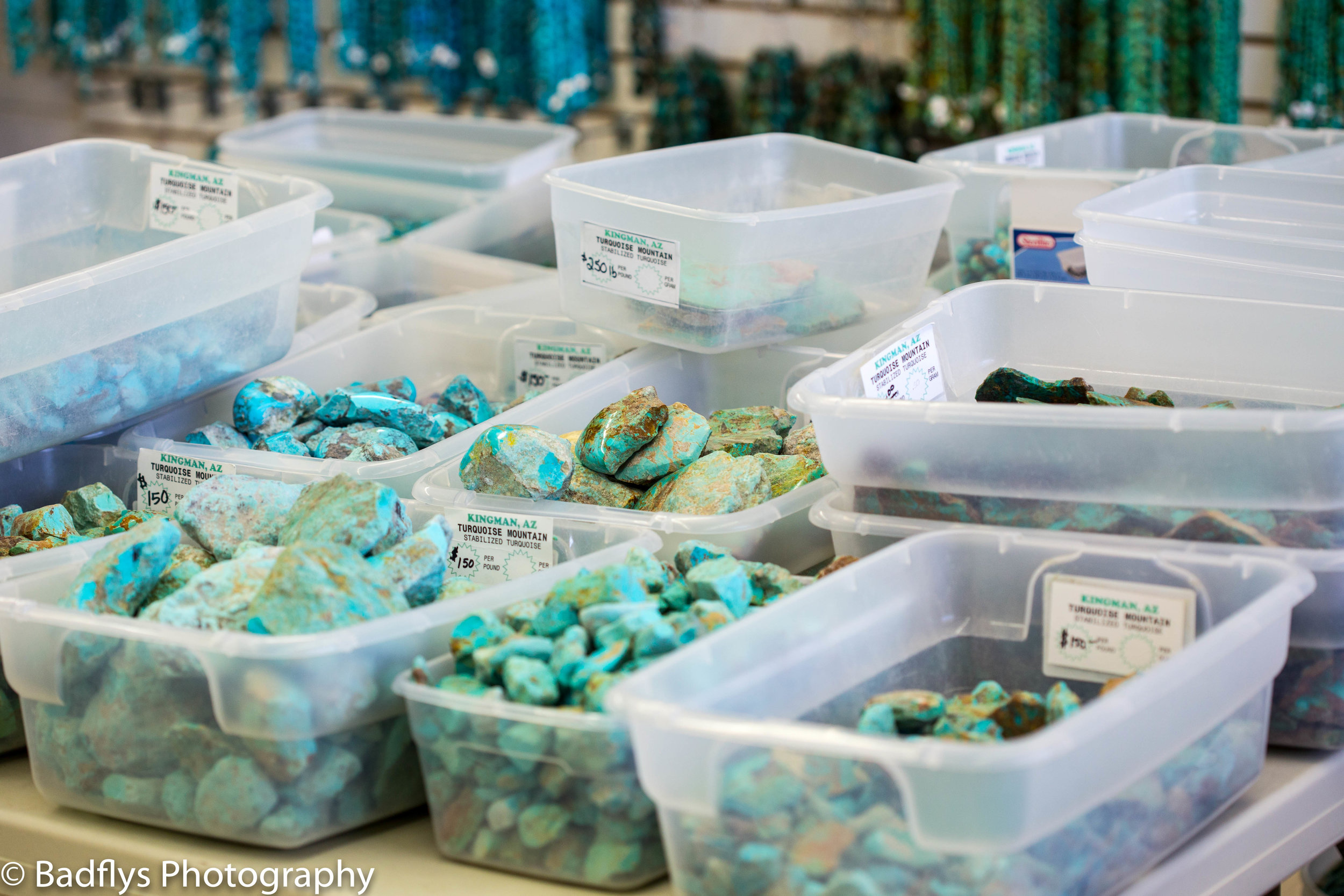Every time I go anywhere I am always on the lookout for good natural stones that I can use to make one of a kind jewelry pieces. On a recent trip to Arizona to visit family I had the chance to meet a new stone cutter and make a visit to Colbaugh Processing to buy some Kingman Turquoise. I’ll share more about the new stone cutter in a later blog. Let’s talk about Kingman Turquoise and Colbaugh Processing and turquoise.
Picking through the turquoise beads to find the right ones
Colbaugh is THE place to buy Kingman Turquoise as well as other stones. Here, a jewelry maker can buy raw turquoise stone, polished turquoise cabochons and turquoise beads of many different shapes and sizes as well as block turquoise.
Colbaugh Processing mines their turquoise from the Mineral Park Mine, in the Cerbat Mountains 14 miles northwest of Kingman. This mining site has been active for over 1000 years. S.A. “Chuck” Colbaugh acquired the rights to mine this area for turquoise in the early 1960's and the family continues to mine for turquoise to this day. All of the processing, cutting and polishing of stones happens at the Colbaugh site 7 miles north of Kingman AZ.
Kingman turquoise is known for it’s deep blue color and it’s black veining or matrix pattern. The blue color of Kingman Turquoise has become the industry standard for turquoise color. The Kingman mines also produce some stunning green turquoise. The Colbaugh family continues to mine and process excellent quality turquoise from multiple locations north of Kingman, AZ.
The American Southwest, including Arizona, New Mexico, Colorado, Nevada are some of the most prolific producers of turquoise. There are well known turquoise mines all over the southwest. Sleeping Beauty, Bisbee, Cripple Creek and High Lonesome to name a few. Production at these mines varies with many grades of turquoise being produced. Pure natural untreated turquoise is extremely fragile and rare. If you are searching for jewelry made with pure, natural turquoise be prepared to pay handsomely, it will be the most expensive turquoise on the market.
Turquoise is naturally a relatively porous and soft stone (5-6 on the Mohs scale). Only a small proportion of the turquoise pulled from any mine is naturally hard enough to be used in jewelry making without damage. The action of cutting polishing and setting would cause the stone to crumble. Softness of turquoise leads to higher porosity. That allows the turquoise to absorb contaminants such as oil and residue from handling. This will change it’s color over time.
To strengthen and seal the turquoise most of the turquoise mined today is stabilized. Stabilization is a process developed back in the 1950s. In the process of stabilization the natural stone is pressure infused with some sort of resin that strengthens and seals the stone. This process is very well proven and common. Stabilized Turquoise is easier to cut, polish and work and more resistant to color change. This stabilization also makes turquoise more affordable. High quality turquoise is stabilized with the minimum amount of clear stabilizer required to strengthen and seal it.
A selection of the Kingman Turquoise that I bought. The smallest are 6mm and the larger green stones are 18mm


